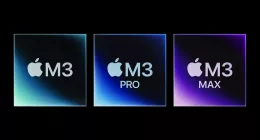In yet more dismaying, Brexit-related news, the pound sterling price of the Apple Macbook, old and new, has been hiked by as much as 25 per cent to take account of currency fluctuations in the wake of the June referendum vote.
At an event yesterday, the company announced a clutch of new laptops, also taking the opportunity to introduce some new Mac hardware to reformulate UK pricing across its entire range of Macs, including existing models. What this means is that Apple’s entry level Mac now costs £949 in the UK — a full £100 more expensive than just a few days ago. (The former entry level Mac laptop, an 11in MacBook Air, which was priced at £749, has been discontinued entirely.)
Among other Apple Mac laptop price hikes is the 12-inch MacBook, which starts at £1,249 vs the same model selling for £1,049 earlier this week — a price increase of almost 20 percent. Also affected are the new 13-inch and 15-inch MacBook Pros with Retina displays, which start at £1,249 and £1,899 respectively, vs £999 and £1,599 prior to the price hike — price hikes of 25 percent and almost 20 percent (Although they are actually refreshed pieces, and also have the added feature of the “Touch Bar”, a new mini display replacing the function keys).
Other products hit: the Apple Mac Mini, which used to start at £399, now costs at least £479 — which is another 20 percent rise; the iMac which has risen from an entry level price of £899 to £1,049; and the Apple Mac Pro which has increased by £500, with the basic model rising from £2,499 to £2,999 (another 20 percent jump). None of these Mac models have been refreshed, which means the price rise is purely related to the pound’s post-Brexit plunge.
A tiny silver lining against the darkening cloud of astronomically expensive Macbooks is that Apple’s UK prices do include VAT sales tax, so there is no additional fee to factor in on top of the price hikes (aside from P&P if you’re ordering online). In a statement given to the Guardian, the company said,
Apple suggests product prices internationally on the basis of several factors, including currency exchange rates, local import laws, business practices, taxes, and the cost of doing business. These factors vary from region to region and over time, such that international prices are not always comparable to US suggested retail prices.
This price-raising frenzy follows a similar move by Microsoft earlier this week, and also from back in August, when HTC also bumped up the price of its Vive VR system by an extra £70, also blaming currency fluctuations, meaning the virtual reality system now costs UK buyers £759.





